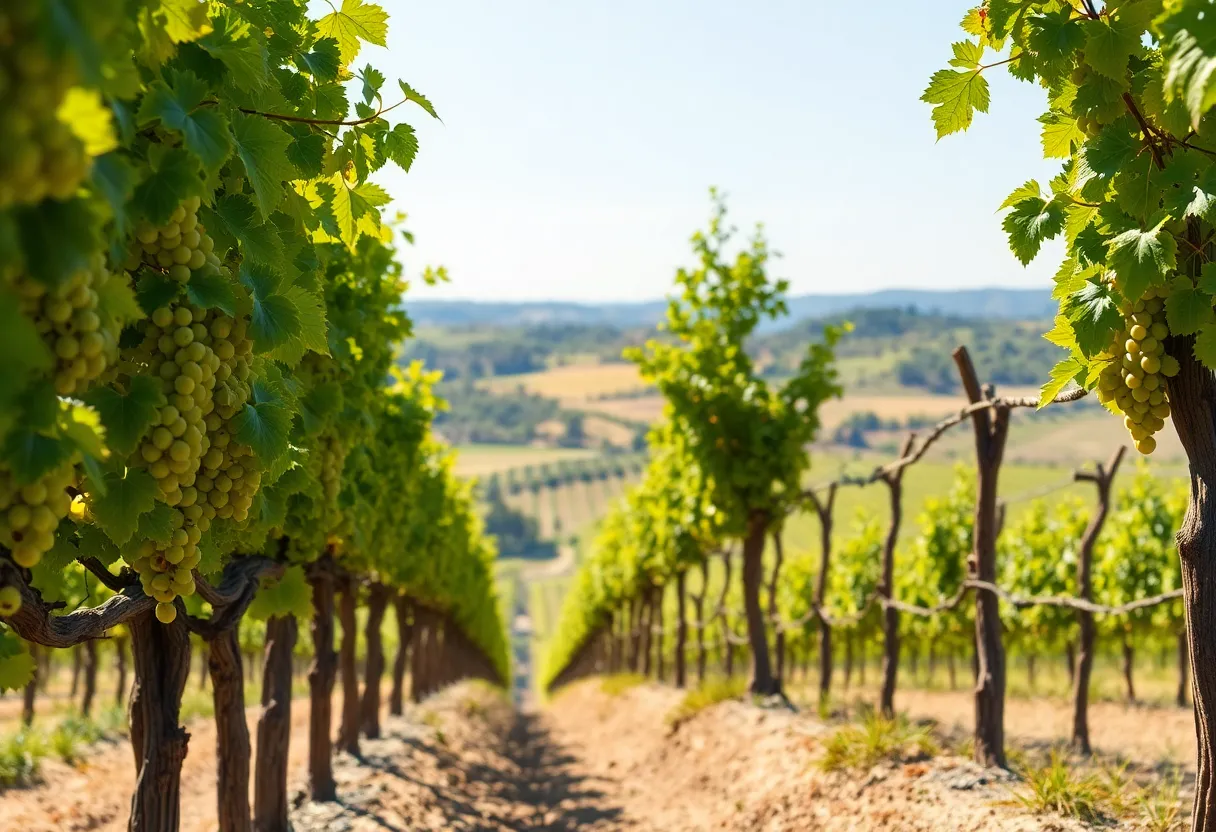News Summary
California’s thriving wine industry is facing significant challenges due to new tariffs imposed by Canada and potential tariffs on European wines. With 80% of U.S. wine production occurring in the state, wineries like Wilson Creek Winery & Vineyards are grappling with increased costs and uncertain market conditions. The ongoing trade tensions, economic pressures, and changing consumer preferences create a worrying landscape for the future of California wines as local producers seek ways to adapt and thrive.
California’s Iconic Wine Industry Faces New Challenges Due to Tariffs
In sunny California, the aroma of grapes and the clinking of glasses might be overshadowed by looming tariffs that threaten the state’s vibrant wine industry. Producing a staggering 80% of all American wine, California’s wineries play a vital role not only in the local economy but also in the broader agricultural export landscape.
Trade Tensions and Retaliatory Tariffs
The situation has become particularly concerning with Canada imposing a hefty 25% retaliatory tariff on certain U.S. goods in reaction to tariffs placed on Canadian imports. This bold move has led several Canadian provinces to banish U.S. liquor from their shelves, leaving a significant dent in California’s wine exports. The reality sets in that the Golden State’s wines, which once flowed freely into Canadian markets, are now facing significant roadblocks.
Rising Costs Impacting Producers
Among the wineries feeling the pinch is Wilson Creek Winery & Vineyards, which relies on blue glass bottles imported from China that are now subject to a 20% tariff. With costs creeping up, owners are grappling with the difficult decision of passing these expenses on to their customers or absorbing them, which is made even more challenging with the desire to keep prices affordable for wine lovers.
A Worrying Landscape for Beverage Enthusiasts
Matters were further complicated when discussions of a proposed 200% tariff on European wines, Champagnes, and spirits emerged. This news has sent shockwaves through the beverage industry and raised numerous eyebrows. The beverage sector is anxiously watching these developments, particularly as Canada stands out as the largest export market for U.S. wines, raking in over $1.1 billion in retail sales annually.
Challenges in the Wine World
Even before these tariffs came into play, the California wine industry was navigating through other stormy waters. Sales of alcohol have been on a downward spiral, especially among younger generations like Gen Z, who are drinking less compared to their predecessors. This trend places additional pressure on wineries, already wrestling with rising production costs due to labor, raw materials, and stringent regulations.
Climate Woes and Economic Concerns
Mother Nature has also not been kind, as environmental issues such as wildfires and drought conditions adversely affect grape yields and the overall quality of wine. These elements combine with tariffs that further strain equipment and materials that wineries rely on, such as bottling gear and aluminum tops.
The repercussions of these costs may ripple through the economy, potentially leading to reduced spending in the wider restaurant and bar sectors. Fewer dollars spent on fine wines can affect the jobs that depend on this vibrant industry.
A Glimmer of Hope?
On an upbeat note, a few industry figures argue that tariffs may open up new doors for local U.S. producers by leveling the playing field in domestic markets. Some wineries are exploring opportunities to diversify their customer bases into regions like Eastern Europe and Africa, seeking to create a safety net amid the ongoing turmoil. Investments in innovative technologies and production methods are also happening to ensure wineries don’t have to hike prices significantly.
Relying on Resilience
Despite the challenges, there is some optimism on the home front. It’s worth noting that only about 10% of wine produced in California is exported, suggesting that the local market may still stand strong. However, smaller family-owned wineries, who lack the resources of their larger counterparts, are facing tougher battles against the economic impacts of tariffs.
The Road Ahead
In recent years, about 60,000 acres of grapevines have been removed due to declining demand, raising questions about the future of wine production in the region. The intricate maze of trade and tariffs creates unique challenges for distribution networks, ultimately impacting prices for both domestic and imported wines. Retailers are concerned that the affordable wine market may be disrupted, further complicating the situation for everyday customers who treasure moderately priced wines.
As California winemakers seek creative pathways to navigate these tariffs and keep their businesses afloat, one thing is certain—this iconic wine industry is far from giving up. The resilience of California’s wineries suggests they will continue to adapt in the face of changing landscapes, both locally and globally.
Deeper Dive: News & Info About This Topic
- ABC30
- Los Angeles Times
- Moneywise
- CNN
- Wine Spectator
- Wikipedia: California Wine
- Newsweek
- Google Search: California wine tariffs
- Wine-Searcher
- Google Scholar: California wine tariffs
- Spectrum News 1
- Encyclopedia Britannica: California wine

Author: STAFF HERE HUNTINGTON BEACH
The Huntington Beach Staff Writer represents the experienced team at HEREHuntingtonBeach.com, your go-to source for actionable local news and information in Huntington Beach, Orange County, and beyond. Specializing in "news you can use," we cover essential topics like product reviews for personal and business needs, local business directories, politics, real estate trends, neighborhood insights, and state news affecting the area—with deep expertise drawn from years of dedicated reporting and strong community input, including local press releases and business updates. We deliver top reporting on high-value events such as the Huntington Beach Surf City USA Marathon, the U.S. Open of Surfing, Fourth of July celebrations at the Huntington Beach Pier, and community festivals at Huntington Beach Central Park. Our coverage extends to key organizations like the Huntington Beach Chamber of Commerce and Visit Huntington Beach, plus leading businesses in retail, hospitality, and outdoor recreation that drive the local economy. As part of the broader HERE network, including HEREAnaheim.com, HERECostaMesa.com, HERESantaAna.com, and HERELosAngeles.com, we provide comprehensive, credible insights into Southern California's dynamic landscape.





